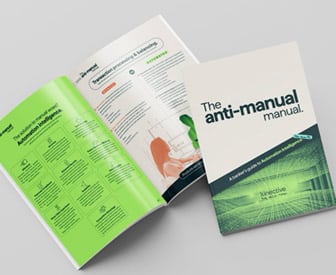Everyone wants the balance of their deposit accounts to grow — banks, credit unions, and consumers alike. How could it happen more often?
Of course, there’s an obvious answer from banking’s perspective: The industry doesn’t control people’s fortunes. Institutions would snap their fingers if they could to make account holders wealthier – executives have no doubt wished they could magically add dollars to customer accounts this year – but they cannot take on the responsibility or liability of managing consumers’ financial success.
While institutions often act as educators, information providers, and, in some cases, even trainers and counselors, depositors have been entirely responsible for the amount in their deposit accounts. But now technology is shifting that old delegation of duties. Even if institutions can’t handle account holders’ financial success, they can now handle more of the tasks that go into banking and thereby influence financial success.
Executives should now consider: What would it mean for our funding pressure if we could foster higher balances among current account holders at scale? What would it mean for our brand if our customers knew our institution was the easiest place to save more money?
Pain in Personal Finance
The opportunity for deposit and loyalty growth for banks and credit unions is so large because hundreds of millions of Americans struggle financially. Most do not feel like they have their finances in control. According to The Financial Health Network, just 40% think they are on track to meet long-term financial goals.
In 2023, about 140 million Americans were financially coping, and nearly 40 million were financially vulnerable. The Financial Health Network measures a consumer’s financial health based on expenses to income, paying bills on time, liquid savings, long-term savings, debt levels, credit score, insurance coverage, and their ability to plan financially. Those coping are doing well in some but not all of these categories; those who are vulnerable are healthy in few to none.
“Most people do not feel like they have their finances in control. According to The Financial Health Network, just 40% think they are on track to meet long-term financial goals.”
Over 70% are financially unhealthy, according to The Financial Health Network. And that term “health” applies literally to dollars and cents, and to how much their finances trouble them.
Nearly half of all Baby Boomers lack retirement savings, according to data gathered by Jack Henry. About 70% feel uncertain about their financial security. Some 62% of Generation X lack an emergency fund, and 60% report negative mental health effects due to money concerns.
The trend worsens when looking at Americans generally. Some 43% don’t have savings to cover expenses after a job loss. Half of Americans (49%) spent less in 2023 than their incomes, meaning the other 50% borrowed to pay for expenses beyond their income. Almost half (48%) of those who reported debt were also financially vulnerable.
What can institutions do about these challenges? And how can they make money on people with so few assets or so little saved? Let’s cover the latter first.

Accelerate Time-to-Market with Rapid Implementation
Create a sustainable competitive advantage with faster time to market by drastically reducing implementation time.
Read More about Accelerate Time-to-Market with Rapid Implementation

The New AI: A Banker’s Guide to Automation Intelligence
Manual tasks across channels is costly. And while AI is hot, there’s a simpler way to bring efficiency that many bankers have overlooked.
Read More about The New AI: A Banker’s Guide to Automation Intelligence
Fostering Deposit Dollars: The Least Expensive Option
It’s been written many times in the past year, but it bears repeating: The industry is fresh out of 15 years of near-zero interest rates. It didn’t matter in 2021 whose dollar it was — financially healthy or unhealthy — it wasn’t worth much in terms of interest.
Now, that same dollar is nearly 16 times more valuable to consumers and expensive to banking institutions. Rewind eight quarters, and the cost of funding earning assets for all banks in the country was 0.16%. As of the latest FDIC release in the fourth quarter of 2023, it was 2.54%. And that’s just interest expense; it doesn’t include marketing, fraud, technology, or any other operating expense associated with deposit gathering.
“Now, that same dollar is nearly 16 times more valuable to consumers and expensive to banking institutions.”
In a 16-times-interest-expense world, a $100 savings account that becomes a $400 savings account is incredibly valuable. That institution tripled its volume without necessarily increasing its interest expense. If a similar change occurs across thousands of accounts, the savings multiply for banks and customers. Supposing depositors went from no rainy-day savings to a savings account filled with three months’ expenses, even fewer accounts would be needed to impact funding costs materially.
When the headcount is 140 million financially coping consumers, there is ample opportunity for institutions to achieve this volume as well. Banks and credit unions can grow deposits by making financial wellness outcomes – such as eliminating debt and saving the payments afterward – happen more often. So how do they do that?
Helping them Regain the Reigns
As people advance from job to job, get married, borrow to purchase cars, houses, or groceries, invest for retirement, or save for health expenses, their financial footprint balloons—often out of control.
Jack Henry’s 2023 Strategic Priorities Benchmark report found that “the average American consumer uses 15 to 20 different financial service providers.” The more financially troubled consumers are, or the younger they are, the more the number of providers expands.
Brenton Peck, director at The Financial Health Network, describes the result as “information overload,” especially for those who are financially coping or vulnerable. Gen Y and Gen Z couples use upwards of 30 to 40 financial service providers, according to Jack Henry.
People “only have so much mental bandwidth generally. The more finances are a struggle, the more they tend to work. They often need to switch services more often, and it can play into bigger negative outcomes like divorce or severe mental health issues,” Peck says. “If you have multiple side gigs or jobs, it becomes hard to manage when money comes in and when it goes out.”
“Consumers can have upwards of 14 financial apps on their phone,” Nicole Harper, director of corporate strategy at Jack Henry, tells The Financial Brand. “That financial fragmentation makes it really hard to get a 360-degree view of your finances. How can you even identify opportunities to improve financial health and wellness? It can be hard to know where to look.”
Fracturing is a nuisance at first, but it can have long-term negative effects because it becomes harder for people to tell where they are financially. Americans need services to manage all their financial services. “It’s become about the power of aggregation,” Harper says. “Serving as their “primary financial institution is still very relevant, but in today’s terms, it’s become even more about being their preferred financial app.”
“Americans need services to manage all their financial services.”
Americans pay an average of $1,583 toward non-mortgage debts each month, according to a LendingTree study of 310,000 users. If a family is trying to reduce payments, they may have 15 to 20 companies to check before they know which to pay off first. Put the power in their hand to choose the right debt to eliminate. If they pay off just 10%, that average American can send over $158 to savings each and every month. If they maintain that for a year, they save $1,896. If 5,000 people make a similar change, their institution grows $9.5 million in deposits without spending a dime in acquisition costs.
It’s not a complete funding strategy, but it is a tidy sum. The greater value is what those depositors begin to believe about their institution: It may be the easiest place to become financially successful. What other banking needs might they apply that belief to?
Read more about financial education:
- First ‘Bank of the Kid’: Shaping a Financially Literate Generation
- Which Banks Offer HSAs to Customers (And Why Yours Should)

Preferred Financial App
Institutions can influence deposit balances en masse by removing obstacles to that outcome using technology.
For years, fintechs have attempted to swoop in and take market share because of the strong consumer need for personal finance to become easier. Personal financial management fintechs even convinced account holders to let them into online banking. Yes, they let a company, a group of people they did not know, log into their account. And for what? To take pictures, otherwise known as “screen scraping.”
The problem for consumers was that they often did not receive a solution to their financial fragmentation because scraped data often lacked the clarity or completeness they needed. “Then there are the risks of screen scraping for account holders in sharing their credentials,” Harper says, “The shift today is to APIs, and with it has come specialized [personal financial management fintechs] brought to consumers inside the secure banking environment.”
Consumers have voted with their feet; they want wellness help from their banking institution. In 2022, about 54% turned to banks and credit unions to address financial tasks like trimming spending, tracking savings, and prioritizing bills, compared to 16% using third-party apps and websites, according to Jack Henry in 2023.
Banking executives are responding by pressing their advantage. Just as deposit attrition sits atop institutions’ list of concerns, Jack Henry’s polling of CEOs across the country for its 2024 Strategic Priorities Benchmark report asked: What fintech type did CEOs say they’d most like to embed in their banking experience this year? “Financial health is a top three category they want to bring to their digital experience,” Harper reports. “It placed in the top three in both 2023 and 2024.”
Financial wellness certainly can help institutions grow deposits, but it’s also somewhat late to a party that started before 2023. Banking industry leaders knew what it would mean for a brand to become known as the easiest place to save more money back in 2022: It may determine which institutions enjoy primacy as preferred financial apps.







